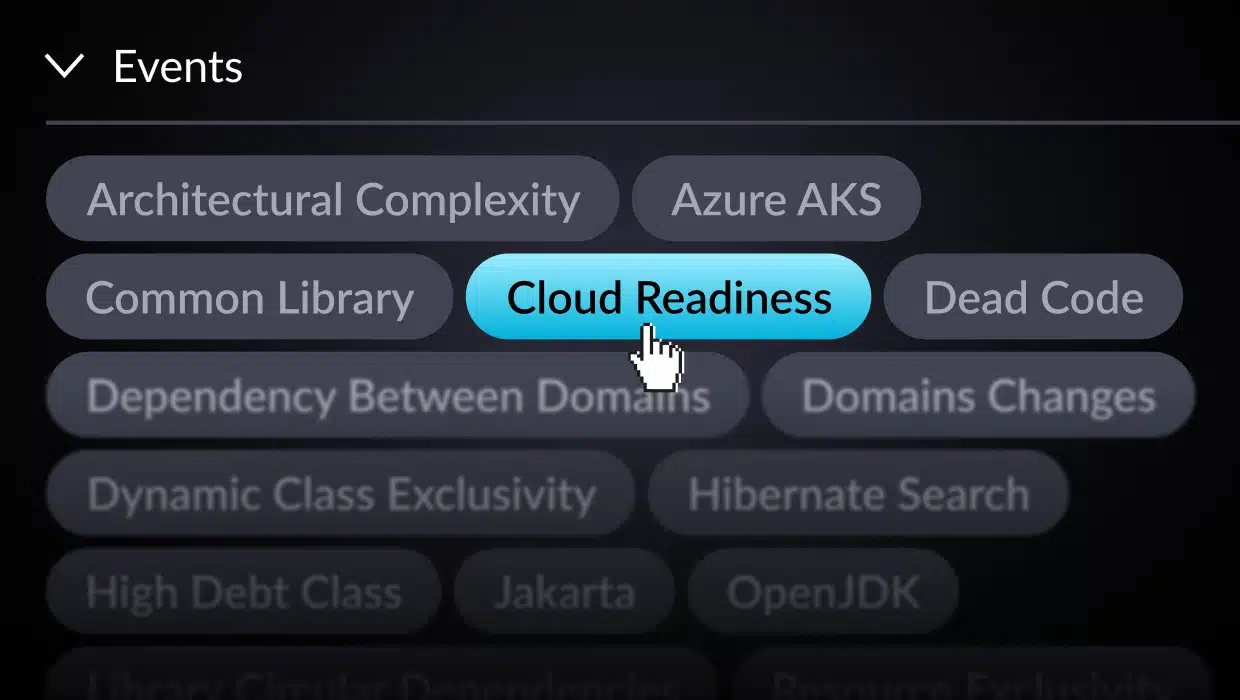The Case for Prioritizing Cloud Migration For Legacy Java Apps
The digital revolution has brought about a new era. The need for an integrated solution that houses and aggregates customer data, channeling it to its best possible channels, is what has propelled cloud systems to the forefront of digital change.
Cloud hosting is one of the most effective web technologies introduced recently. You can use cloud hosting for various reasons, including data storage when a business wants to move all of its data and digital infrastructure to the cloud.
This article will examine why cloud migration for legacy Java applications is important, its benefits, and some of the details to watch out for.
Why Cloud Migration Is Important: Cloud Computing
According to Forbes, despite nearly 98 percent of businesses running their on-premises hardware servers to sustain IT architecture, the COVID 19 pandemic has forced some changes. Additionally, 77 percent of organizations have one or several parts of their systems in the cloud. Companies are shifting from legacy systems and migrating to the cloud to ensure business continuity.
Cloud usage and expenditure will rise according to decision-makers polled globally. The report further indicates that businesses continue to support multi-cloud and hybrid cloud infrastructure strategies. They are also spending more with vendors across the board because of the higher-than-expected cloud usage due to COVID-19 global epidemic constraints throughout 2020. Cloud migration is not only important, it is essential.
What Is Cloud Migration?
Cloud migration describes the process of transferring digital infrastructure to the cloud. Transferring from on-premises data centers or legacy infrastructure to the cloud is commonly called cloud migration. Why cloud migration is important is because it moves local-host infrastructure, data, and services to the distributed cloud computing infrastructure. However, the success of this process depends on planning and doing an impact analysis of existing systems.
Some examples of using the cloud are Zoom for meetings or Google drive to store and share content. Companies that sign up with cloud service providers can oversee their entire infrastructure from remote locations. This eliminates the security risk, interruptions, and costs associated with maintaining on-premise hardware.
Necessity for Cloud Migration
Cloud computing is becoming a business necessity, regardless of the company’s size or the volume of work your company performs. It offers cost savings, flexibility, and dependable IT resources. Instead of worrying about the upkeep of your private data centers for information storage, your company can rely on the scalability of cloud storage to develop out storage as needed. Another reason why cloud migration is important is that it increases your adaptability, resulting in a lower total cost of ownership.
Related: Why Legacy Application Modernization Is the New Buzzword
Benefits of Cloud Migration
Cost-Effectiveness:
Because of its inherent features such as scalability, trustworthiness, and a high-availability model for companies, cloud computing is highly sought out. Data migration to the cloud is cost-effective compared to on-premise costs such as hardware, software, support, outages, personnel, and evaluation.
One of the principal advantages for companies is focusing on their core business while outsourcing their primary infrastructure services to cloud service providers. On the other hand, cloud computing is more environmentally friendly than on-premises systems because it saves energy and provides green features that reduce the number of physical materials.
Business Continuity:
Cloud backup solutions, such as backup and restore in a business continuity plan, play an essential role in an assertive approach to achieving minimal downtime. Many businesses, particularly financial institutions, cannot afford outages to track and upgrade software and systems. The vast pool of IT resources enables organizations to enjoy the benefits of duplicated computer resources without regard to geography.
Increased Security:
Data is critical for any organization. Cloud vendors must consider the facts of critical information reliability, which is vital in today’s competitive business landscape. The commitment of a cloud vendor guarantees that their architecture is protected and that their clients’ applications and data are well shielded.
Cloud service providers offer a complete security protocol that uses encryption mechanisms to ensure data protection. Cloud providers’ complex data centers are built on layered security techniques, including data encryption, key management, sturdy access controls, and conformity with regular system audits.
Scalable IT Resources:
Most network operators will allow organizations to enhance their existing capacity to satisfy business needs or adjustments by providing scalable IT resources. Some clients may require a simple adjustment to support business expansion without making costly changes to their existing system infrastructure.
If an application is experiencing additional business, demand management can be easily managed via cloud resources, whereas increasing demand on resources via traditional computing environments is challenging.
Challenges of Migrating to the Cloud
According to The Cloud Adoption in 2020, a recent survey by technology and business training firm O’Reilly Media, the greatest challenge affecting cloud adopters isn’t technical; it’s people. This is because organizations must ensure they have the necessary technical skills to ensure long-term cloud success.
Choosing the correct cloud platform
Information management and data migration are critical research challenges. It is never as simple as simply moving data from legacy infrastructure to the cloud. Even after conducting a SWOT (Strengths, Weaknesses, Opportunities, and Threats) analysis, selecting a suitable cloud provider is not easy.
Leading cloud market players such as Google Cloud Platform (GCP), Amazon Web Services (AWS), and Microsoft Azure are constantly looking for ways to distinguish themselves from industry rivals clearly.
As a result, businesses must ask cloud providers if they have appropriate data migration techniques to move data while keeping vendor lock-in and functionality in mind (the ability of software to be transferred from one machine or system to another).
Adaptability and process issues
Change management is essential in these types of endeavors. Training employees on a new system and software console may incur extra costs. In addition, the attitude of employees toward versatility on a new system may be a challenge.
A technical fault does not always result from hardware or software failure; in fact, effective IT procedures and infrastructure operations are at the foundation of digitalization. There is a need to structure, implement, and oversee a plan that supports the transformation in data and process migration.
Continuing challenges to ensure cloud security:
Even though cloud market powerhouses have promoted their latest data security mechanism, the NSA mass surveillance scandal casts doubt. It causes a rethinking of storing all sensitive information data in the cloud.
This lack of trust affects all stakeholders involved. These include individual citizens, enterprises, and governments. Because cloud computing data is widely obtainable anywhere, a security breach caused by poor password security or cyber-attacks can jeopardize personal and commercial data.
The organizations that host their data locally have complete authority and control. They may feel exposed if they decide to relocate to the cloud because hackers frequently target large data centers.
Cost-Benefit Analysis:
A good number of organizations worldwide are in the process of integrating cloud technology as a critical component of their technology strategy. Nonetheless, despite overwhelming cloud traction, cost-benefit analysis techniques demonstrating the business impact of cloud adoption continue to be a significant risk factor.
It can be challenging to redevelop your existing IT infrastructure (server, network, and storage) to fulfill the criteria before migrating to the cloud. Cloud providers bill clients on a pay-as-you-go basis depending on the number of customers and transaction volumes. On the other hand, organizations are not eager to pay even more for system purchases, management, and increased bandwidth costs.
Related: How to Conduct an Application Assessment for Cloud Migration
How to Deal With Data Migration Concerns
No matter your organization’s current IT ecosystem, effective planning is needed before embarking on a migration. Each cloud provider has its range of strategies that you can integrate into your cloud-migration plan.
The most important aspect of this process is remembering your clientele and end-users at each stage of the relocation. Following are some of the migrating strategies:
Rehosting:
This is also known as the “Lift and shift” strategy. A migration tactic for shifting a software or operating system from one environment to another – without revamping the app – is extremely good in a corporate environment.
Re-platforming:
It is the process of enhancing an app from its existing design with the advantage of “interoperability,” which allows developers to reuse current infrastructure.
Repurchasing:
Repurchasing is a technique for switching to a different good or service, such as changing from a self-managed email system to a web-based email-as-a-service.
Re-architecting:
This solution entails re-building an architecture design using PaaS’s cloud services and changing software applications, making it ideal for businesses that require additional features, magnitude, or performance.
Retiring:
A cost-cutting strategy in which organizations simply get rid of obsolete services and devices.
Cloud Service Models
Cloud computing has a few implementation concepts; organizations select the model depending on the size of their company or organization and the sophistication of their data. Amazon, Google, and Microsoft are currently offering their services in any of the following models: IaaS, PaaS, SaaS, SECaaS, and DaaS.
Security as a service (SECaaS):
Security as a service (SECaaS) is a subscription-based service that allows businesses to incorporate their security apparatus with a cloud infrastructure. SECaaS is a data security model that does not necessitate on-premises equipment or additional tools. It is deduced from the “software as a service” model.
Cloud security service providers offer presumably significant benefits such as authentication, anti-virus, anti-malware, intrusion detection, penetration testing, and security event management, as well as auditing current security measures. SECaaS protects against one of the most enduring online security threats.
Data as a Service (DaaS):
DaaS is a centralized data storage location that allows users to easily move their information without requiring a high level of data migration competence. The notion of data as a service (DaaS) generates from software as a service (SaaS). The goal of DaaS is to provide data in real-time that is collected and stored on the cloud, irrespective of the client’s geographic region.
Infrastructure as a Service (IaaS):
Infrastructure as a Service (IaaS) is suitable for large institutions that process millions of transactions and have much physical hardware. IaaS provides complete self-service access to and monitoring assets such as computers, networking, storage, and other services. It enables businesses to acquire resources on an as-needed basis. Top IaaS providers include Microsoft Azure, Amazon AWS, and Google Compute Engine.
Platform as a Service (PaaS):
PaaS enables consumers to use the vendor’s cloud infrastructure to deploy web applications and other software applications by utilizing predetermined tools provided by cloud suppliers.
This model’s physical infrastructure is entirely the vendor’s obligation. The only thing the customer has to do is regulate and preserve software applications. PaaS services include AWS Elastic Beanstalk, Apache Stratos, Windows Azure, Google App Engine, and OpenShift.
Software as a Service (SaaS):
SaaS offers cloud infrastructure and cloud platforms to consumers who use software applications. The end-user accesses its applications via an internet browser or an IDE (Integrated Development Environment), eliminating the need to configure or sustain additional software. In this computer technology model, the vendor manages computer hardware, and software platforms like PaaS does. Google Docs, Google Gmail, and Microsoft Office 365 are examples of SaaS.
Choosing The Right Cloud Computing Partner
Cloud computing is a low-cost solution with many features that enable businesses to operate In an environmentally friendly manner. Easy disaster recovery assists users in maintaining business continuity without requiring a high level of technical expertise, while cloud providers enforce strict regulatory policies to ensure data integrity and consistency.
Scalable IT resources can assist businesses in expanding existing resources to meet their business needs. Choosing the right cloud provider is challenging regarding support, techniques, and approaches. The human factor is also a significant challenge, as it pertains to how people accept changes in adaptability. vFunction makes all this easy. We modernize Java applications and accelerate migration to the cloud. Our products help architects and developers automatically, efficiently, and rapidly assess and transform their monolithic apps into microservices. It’s a repeatable, automated factory model purpose-built for scalable cloud-native modernization. You can get in touch with us today to accelerate your journey to a cloud-native architecture.







